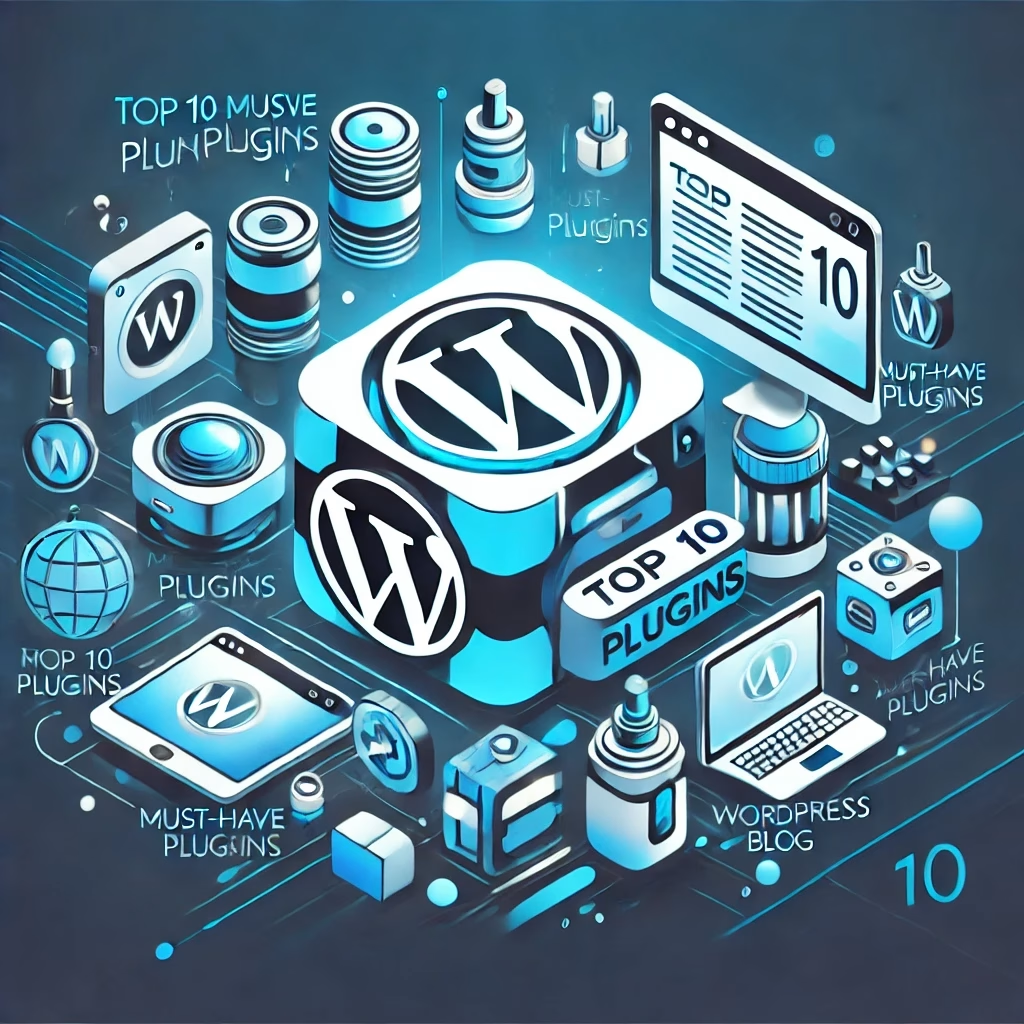Introduction
Choosing the right plugins can transform your WordPress blog, improving its performance, functionality, and user experience. With thousands of plugins available, it can be challenging to know which ones to install. This guide will help you discover the top 10 must-have plugins that every WordPress blog should have to optimize performance, enhance security, and streamline content management.
Why Plugins Matter for WordPress Blogs
Plugins are the building blocks of WordPress, enabling bloggers to add features and improve their site’s functionality without writing a single line of code. Here’s why plugins are essential:
- Enhance website performance.
- Improve user experience.
- Strengthen security.
- Streamline blog management.
Top 10 Must-Have Plugins for Every WordPress Blog
1. Yoast SEO
- Purpose: Optimizes your blog for search engines.
- Key Features:
- Keyword optimization.
- Readability analysis.
- XML sitemaps.
- Why You Need It: Helps improve your site’s visibility and rankings on search engines.
2. Akismet Anti-Spam
- Purpose: Protects your blog from spam comments.
- Key Features:
- Automatically filters spam.
- Keeps your comment section clean.
- Why You Need It: Ensures a professional and engaging comment section.
3. Jetpack
- Purpose: Offers a suite of tools for security, performance, and growth.
- Key Features:
- Site statistics.
- Malware scanning.
- Lazy loading for images.
- Why You Need It: Provides an all-in-one solution for managing your blog.
4. WPForms
- Purpose: Create contact forms easily.
- Key Features:
- Drag-and-drop builder.
- Pre-built templates.
- Why You Need It: Makes it easy for readers to connect with you.
5. Smush
- Purpose: Optimizes images for faster load times.
- Key Features:
- Image compression.
- Bulk optimization.
- Why You Need It: Enhances site performance and improves user experience.
6. MonsterInsights
- Purpose: Integrates Google Analytics with WordPress.
- Key Features:
- Real-time stats.
- Customizable reports.
- Why You Need It: Helps you track and analyze website traffic.
7. Elementor
- Purpose: Build custom pages with a drag-and-drop interface.
- Key Features:
- Live editing.
- Pre-designed templates.
- Why You Need It: Simplifies the process of creating professional-looking pages.
8. UpdraftPlus
- Purpose: Backup and restore your site easily.
- Key Features:
- Automatic backups.
- Cloud storage integration.
- Why You Need It: Ensures your site is safe from data loss.
9. Wordfence Security
- Purpose: Protects your site from malware and attacks.
- Key Features:
- Firewall protection.
- Malware scanner.
- Why You Need It: Keeps your site secure from potential threats.
10. Broken Link Checker
- Purpose: Detects and fixes broken links on your site.
- Key Features:
- Automatic scanning.
- Easy link management.
- Why You Need It: Improves SEO and user experience by fixing broken links.
How to Install and Manage Plugins
Step 1: Navigate to Plugins in Your Dashboard
Go to your WordPress dashboard and click on “Plugins > Add New.”
Step 2: Search for the Plugin
Type the plugin name into the search bar and click “Install Now.”
Step 3: Activate the Plugin
After installation, click “Activate” to enable the plugin on your site.
Step 4: Configure Plugin Settings
Follow the plugin’s setup instructions to configure it for your site’s needs.
Internal and External Links
Internal Links:
External Links:
Conclusion
Plugins are a powerful way to enhance your WordPress blog’s functionality and performance. By installing these 10 must-have plugins, you’ll create a better experience for your readers while ensuring your site is secure and optimized. Start adding these plugins to your blog today and watch your site reach new heights!
FAQs
Q1. Are plugins free to use?
Many plugins offer free versions, but premium versions with advanced features are also available.
Q2. How many plugins should I install?
Only install the plugins you need to avoid slowing down your site.
Q3. Can I delete plugins I no longer use?
Yes, it’s recommended to delete inactive plugins to maintain site performance and security.


